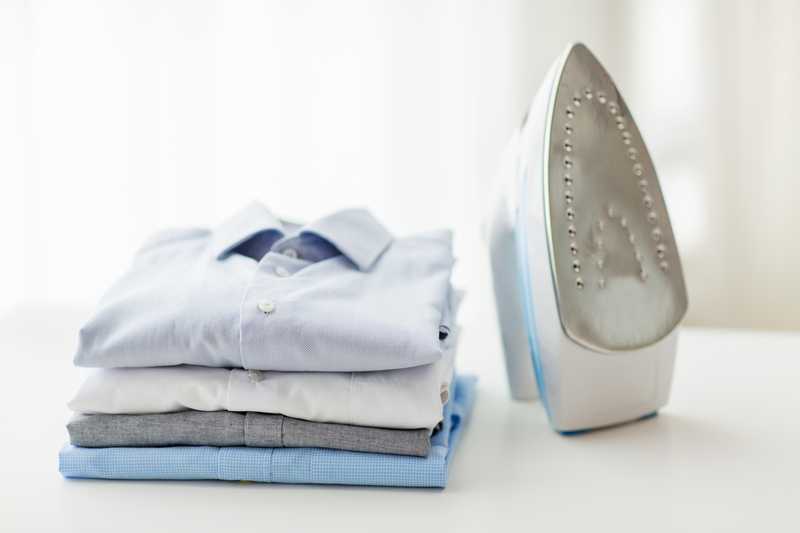Next-Level Window Cleaning: A Step-by-Step Guide
Posted on 09/09/2025
Next-Level Window Cleaning: A Step-by-Step Guide
Window cleaning is often seen as a mundane task. However, with the right techniques and tools, it can be elevated to a whole new level, offering sparkling, streak-free views and enhancing your property's overall appeal. In this comprehensive article, we'll guide you through advanced strategies, professional tips, and the best window cleaning methods for achieving next-level results.
Why Next-Level Window Cleaning Matters
Clean windows are more than just an aesthetic choice; they are crucial for several reasons:
- Improved Indoor Lighting: Crystal-clear windows maximize the amount of natural light entering your space.
- Health and Hygiene: Removing grime and mold reduces the risk of allergies and respiratory issues.
- Enhanced Longevity: Next-level window cleaning prevents permanent damage from mineral deposits and pollutants.
- Better Curb Appeal: Pristine windows instantly uplift your home or office's exterior appearance.

Preparing for Next-Level Window Cleaning
Preparation is crucial to ensure safety, optimize results, and make cleaning efficient. Here's how to get started:
1. Gather Essential Supplies
- Quality squeegee and rubber replacement blades
- Microfiber cloths and scrubbing pads
- Eco-friendly glass cleaner or a vinegar-water solution
- Window cleaning bucket
- Extension poles for high or hard-to-reach windows
- Soft-bristle brush for screens and frames
- Plastic scraper for stubborn residues
- Safety gloves and non-slip footwear
2. Safety First
Never compromise on safety! For multi-story buildings or windows in precarious locations, use a stable ladder and ensure someone is nearby. If unsure, hire a professional window cleaning service with proper equipment.
Step-By-Step Guide to Next-Level Window Cleaning
Step 1: Remove Window Screens and Dust Frames
Begin by gently removing the window screens and setting them aside. Use a soft-bristle brush or a vacuum to remove dust, cobwebs, and loose debris from the window frames and sills. This prevents dirt from turning into muddy streaks during wet cleaning.
Step 2: Wash or Vacuum Window Screens
- Delicately vacuum both sides using a brush attachment.
- For deep cleaning, rinse the screens with a gentle stream of water, or wash with mild soap and a soft brush.
- Allow them to dry completely before reinstalling.
Clean screens mean less dust accumulation on your glass, resulting in longer-lasting shine.
Step 3: Prepare the Perfect Cleaning Solution
Choose the right cleaner. For next-level window cleaning, many pros recommend either a commercial streak-free window cleaner or a DIY mix of one part distilled vinegar to two parts warm water, with a drop of dish soap.
- Commercial cleaners are fast-acting and formulated for minimal streaks.
- DIY solutions are eco-friendly and cost-effective.
Pour your cleaning solution into a bucket. If outside temperatures are below freezing, use lukewarm water to prevent glass from cracking.
Step 4: Wet and Scrub the Glass
- Dampen a microfiber cloth or sponge in the cleaning solution.
- Starting from the top-left corner, wipe the glass in a horizontal or "Z" motion.
- For stubborn spots (like bird droppings or tree sap), employ a plastic scraper or a scrubbing pad.
Never use abrasive materials that might scratch the glass's surface.
Step 5: Mastering the Squeegee Technique
The squeegee is the key to next-level window cleaning--don't skimp on its quality!
- Wet the window completely to avoid scratching.
- Start at the top corner and pull the squeegee smoothly across in one straight motion.
- Wipe the squeegee blade with a clean cloth after each pass.
- Overlap the previous stroke slightly to avoid missed spots or streaks.
- For large panes, the methodical "S-pattern" (top to bottom, snaking left to right) helps prevent drips and ensures an even finish.
Avoid direct sunlight when cleaning; it can dry your solution too quickly and result in streaks.
Step 6: Detailing and Spot Cleaning
- Use a dry microfiber cloth or chamois to polish the edges and corners where water may collect.
- Inspect from different angles to catch any missed streaks or smudges.
- Touch up stubborn spots with a little cleaner sprayed onto a cloth, not the glass, to avoid residue.
This attention to detail is what truly sets professional-grade window cleaning apart.
Step 7: Replace the Screens and Clean Window Tracks
Wait until glass and screens are thoroughly dry before reinserting window screens. Wipe down sills and tracks, removing residue and moisture buildup. For extra sparkle, use a toothbrush dipped in vinegar for tight corners.
Advanced Tips for Truly Next-Level Results
Use Distilled Water
Mineral deposits from tap water can leave streaks or spots. Using distilled or deionized water delivers a flawless, spot-free finish, especially for large exterior windows.
Try a Water-Fed Pole System
For upper-floor or commercial windows, consider a water-fed pole with a soft-bristle brush. These systems use purified water to wash and rinse windows--no ladders or harsh chemicals required.
Polish with Newspaper or Coffee Filters
Vintage yet effective--wiping glass with crumpled newspaper or coffee filters can buff away fine smudges and statically repel dust.
Prevent Future Buildup
- Apply a tiny amount of car wax or a specialist window sealant to repel dust and rain.
- Install exterior window awnings or screens to shield glass from the elements.
- Regularly schedule window cleaning to maintain next-level clarity and keep the process manageable.
Window Cleaning Mistakes to Avoid
Many homeowners fail to achieve truly gleaming windows because of these common mistakes:
- Cleaning on Sunny Days: Cleaning solutions dry too quickly, creating streaks.
- Using Dirty Tools: Old squeegees and grimy cloths just transfer debris back onto glass.
- Neglecting Frames and Tracks: Buildup in these areas can lead to poorly fitting windows or unsightly spots.
- Excess Detergent: Too much cleaner leaves behind a soapy film that attracts more dust.
- Overreaching or Unsafe Ladder Use: Always put safety first--fall-related injuries are a serious risk.
Innovative Products and Tools for High-End Window Cleaning
The market is full of cutting-edge products that make next-level window cleaning faster and easier. Consider these tools for a professional-grade experience:
Microfiber Pads and Cloths
These trap dirt and remove grime without scratching, and they're highly absorbent--essential for streak-free drying.
Silicone Blade Squeegees
Compared to traditional rubber, silicone blades flex more easily and stay sharper longer, ensuring a cleaner swipe.
Robotic Window Cleaners
- Perfect for high-rise apartments or inaccessible exterior windows.
- Equipped with suction motors and microfiber pads that scrub and polish as they move.
- Controlled via smartphone apps for added convenience.
DIY Window Cleaning Solution Recipes
- Vinegar & Water: 1 cup distilled vinegar to 2 cups water; add lemon juice for a fresh scent.
- Ammonia Mix (for tough grime): 1/2 cup ammonia, 2 quarts warm water, 1/4 cup rubbing alcohol. Wear gloves and ensure good ventilation.
- Dish Soap Solution: Few drops of dish soap in a gallon of warm water for general cleaning, followed by a rinse with distilled water.
Professional vs. DIY Window Cleaning: Which Is Right for You?
While DIY next-level window cleaning can be both satisfying and economical, sometimes calling in the professionals is the best choice:
- Time: Large homes or commercial buildings require specialized tools and significant hours.
- Safety: Upper-story windows or complex building shapes demand professional expertise and safety equipment.
- Results: Professionals bring commercial-grade cleaning solutions and advanced filtration technologies for that unmatched, sparkling shine.
For routine maintenance, though, most homeowners can achieve fantastic results by following these advanced tips and steps.

Window Cleaning Frequency and Maintenance
How often should you clean your windows? It depends on your location and climate, but here's a general guideline for maintaining crystal-clear windows:
- Residential homes: Every three to six months.
- City apartments/high-rise buildings: Every two to three months (due to pollution and dust).
- Commercial storefronts: Once a month or as needed for curb appeal.
Regular touch-ups with a microfiber cloth can keep fingerprints and smudges at bay between deeper cleans.
Conclusion: Achieve Flawless, Next-Level Clean Windows Every Time
Window cleaning doesn't have to be a dreaded chore; with the right tools, techniques, and a next-level mindset, it can become a satisfying project that transforms your home or office space. Always prepare thoroughly, use proper methods, avoid common mistakes, and don't hesitate to leverage new technology for next-level window cleaning results.
Whether you choose a DIY approach or invest in a professional window cleaning service, following the step-by-step guide above will ensure your windows are as clean and gleaming as possible. Try these tips for your next window cleaning session and experience the remarkable difference for yourself!



